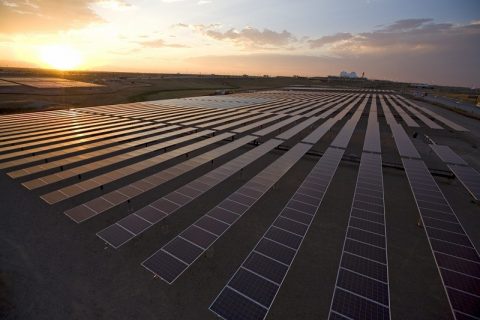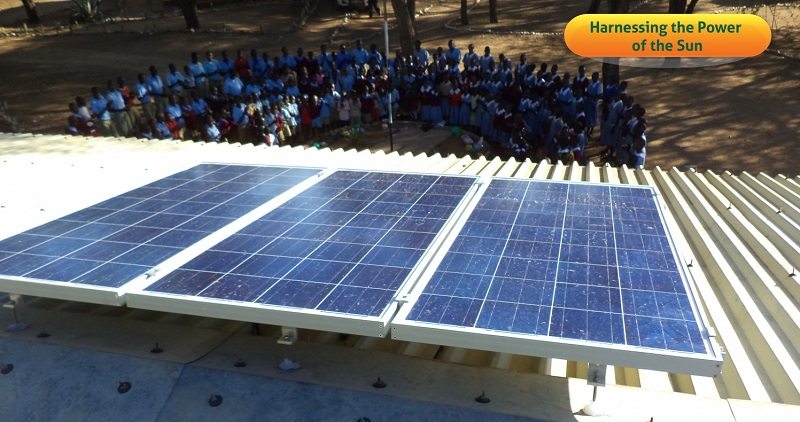According to The International Renewable Energy Agency (IRENA), 60 million people in Africa are using off-grid solar panel systems for cheaper, cleaner and more reliable energy. 10% of the 600 million people now use clean solar energy to power their homes.
Also read:Turning to Off-grid solar power supply
This significant uptake has been made possible by the decreasing prices of solar panel systems in Africa with the cost being lower compared to diesel and kerosene. Moreover, solar energy has the capacity to power several households for $56 per year.
The sun Shines on solar modules that produce DC current. The current goes through a controller that regulates the amount of power that goes into the batteries. The Batteries store DC power for use when needed.
DC appliances run off energy straight from the batteries. You can choose to use AC appliances instead of DC or in addition to DC, but the energy from the batteries must first be changed to AC voltage by an Inverter.
DC solar power is less expensive than AC solar power because an inverter is not required to convert the electricity produced by solar panels and stored in batteries from DC to AC. But DC solar power does not power standard AC appliances.
Off-grid solar power also stores DC electricity in batteries. The addition of an inverter allows this system to convert DC electrical current coming from the batteries into AC or alternating current. AC is the standard form of electricity for anything that “plugs in” to utility power and is the appropriate current for common household appliances.
While AC off-grid solar power systems are more expensive because of the cost of the inverter, the appliances you are able to use are less expensive and there are more kinds of appliances to choose from. Small off-grid DC solar power systems can power tele-communications electronics in locations which are far away from power lines.
Load Analysis
Off-grid load analysis involves measuring or estimating each load. A spreadsheet is the easiest way to gather the necessary information. For each specific load, one needs either its wattage and daily hours of use or its daily kWh use. Each load’s power needs to be measured since rated or sticker wattage may not accurately reflect actual appliance consumption.
When in doubt, round up. Measuring 120 VAC loads is easy with meters like the Kill A Watt, Brand Electronics Digital Power Meter, or ‘Watts Up?’. Any 240 VAC loads will be harder to measure hence one may end up relying on rated wattage or estimates.
The energy use of 240 VAC appliances can be measured with reconditioned utility-style kWh meters. These modestly priced meters can also be installed permanently on major loads like water heaters and heat pumps for ongoing performance evaluation.
Load analysis presents a view into the biggest factor in off-grid design. Careful and detailed attention to this end of the renewable energy project will lead to a better understanding of what one is getting into, and what one is going to get out of renewable energy investment.
Benefits
Since the inception and popularity of LED fixtures, the maintenance on such systems has also reduced greatly. The only thing that requires maintenance now on a standard solar lighting system is changing the battery every so often. Depending on your nights of autonomy, this can vary greatly between manufacturers.
Ask your manufacturer how much their system’s autonomy, or backup power, is standard and what their maintenance schedule is. The more autonomy, the longer the batteries will last and the lower the maintenance costs will be.
Off grid solar power light systems provide a much easier installation. The light can be located where it is required. Unlike the constraints of traditional grid powered lighting where you have to use existing poles and infrastructure, or complete costly trenching to put the power where you need it, solar powered light systems can be installed just about anywhere.
This lowers costs by allowing existing structures and areas to be undisturbed for installation. This is especially helpful in cases where grid power is far from the location of where the light is required and times where you discover, after doing upgrades to an area, that the power lines are deteriorated and would need replacing.
Solar powered light systems can be installed in just about any location. If your lights are needed in a shady area, the solar power systems can be installed up to 50’ to 100’ from the actual light so that the solar can be exposed to full sun while your light can be installed where it is needed.
Linda Wanyoike the Sales and Marketing Executive at Power Point Systems Limited asserts that, apart from easy installation and the lack of electric bills; off-grid solar system also promotes energy consciousness. “In producing all of your own power supply, you can understand exactly how much power you consume in given days,” she said.
“The solar industry is evolving. We are now looking at online monitoring of the solar system, most inverters are now weatherproof and there is no monopoly in the industry thus the prices will go down. Additionally, we are also looking at reducing the bulkiness of the system making it more efficient,” she concluded.
According to Mr. Stephen Migwi the Managing Director of Kenya Solar Energy (KENSEN) insists that the solar industry is very promising. “Many people are embracing the idea of using off-grid solar systems because of their reasonable prices and above all minimal maintenance,” he said.
“Polycrystalline and Copper Indium Gallium Selenide solar cells (CIGS) are the best solar panels when it comes to the off-grid system. Polycrystalline solar panels tend to have slightly lower heat tolerance than monocrystalline solar panels,” he affirms.
They have a higher temperature co-efficient than solar modules made with mono cells. CIGS have a significantly higher temperature resistance compared to crystalline-based solar panels; they are flexible which greatly increases the number of potential applications i.e. curved surfaces, building-integrated photovoltaics, and also have better resistance against shading.
Moreover, according to Carolyn Kelly Colella of WorldWater & Solar Technologies, new solar smart energy technologies can allow a small villages to provide electricity to its residents and communities, including schools. More specifically, the addition of lights create opportunities to further support a child’s education, especially girls, by generating the ability to study at night. Smart payment solutions using cell phone applications are paving the way for villagers to pay for water and energy, and allowing for the economics of a long term sustainable solution to chronic shortages; and thereby contributing to safer living conditions.
Contact our contributors








Energy 2000.org Off grid solar system packages are made to run independently of the electricity grid. These are ideal systems that are designed for rural areas, with no electricity access or acute power outages.
Energy 2000 Pvt. Ltd.’s off grid solar system packages are made to run independently of the electricity grid. These are ideal systems that are designed for rural areas, with no electricity access or acute power outages.